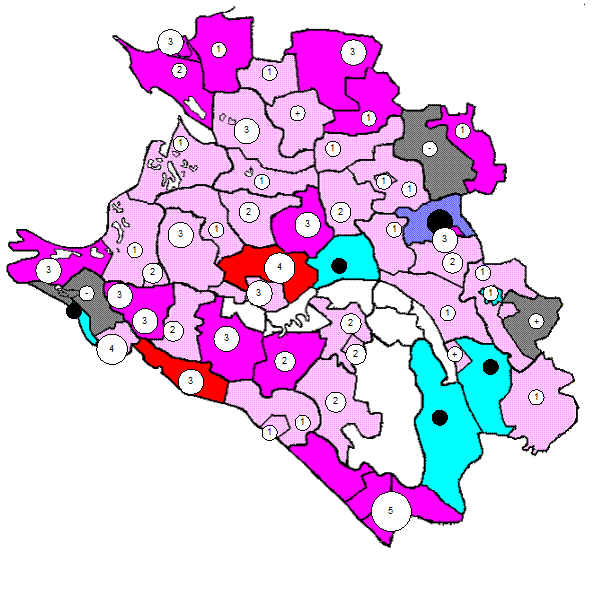Categorial meaning, division of nouns into subclasses
As a part of speech the noun is described in its peculiarity as a word with a specific morphemic structure created with noun-forming derivational means, among them affixation and compounding: prefixes: co-, ex-, over-, post-, under-, dis-, im-, un-: e.g. co-operation, ex-president, overeating, underestimation, postgraduate, disagreement, impossibility, unimportance; suffixes: -ee, -er, -age, -ance, -tion, -ence, -ment, -cy, -ity, -hood, -ness, -ship: e.g. employee, worker, breakage, annoyance, organization, preference, amazement, fluency, popularity, childhood, kindness, friendship; compounding: adjective + noun: e.g. greenhouse, heavyweight, blackboard, self-confidence, rush hours, safety belt; noun + noun: e.g. cupboard, rainforest, countryside, chairman, teapot, earthquake, saucepan; gerund + noun: e.g. frying pan, drinking water, shaving cream, working hours, chewing gum, writing paper, walking stick. In English, the noun is characterized by the categorial meaning of substantivity or thingness which is perceived in any noun irrespective of the form and lexical meaning: e.g. worker, teacher, doctor as doer of action; book, chair, house as a separate thing; rain, water, snow as natural phenomenon; love, beauty, generosity as an abstract notion, and so on. The main paradigmatic classes are found possible to distinguish: common nouns and proper nouns. Common nouns: Concrete – denoting single physical objects (animate or inanimate) having a certain shape and measurements (e.g. table, pupil, lamp, dog); Collective – denoting a group of objects (animate or inanimate) or paired objects (e.g. family, crew, delegation, government staff, jury, jeans, earrings, trousers); Mass – denoting a physical substance having no particular shape or measurements (e.g. bread, sugar, copper, wine, snow, air, milk); Abstract – denoting abstracted states, qualities, feelings (e.g. kindness, adoration, length, knowledge, delight, confidence, experience). As far as proper nouns are concerned, they split into some common subclasses as well indicating names of people, nationalities (the British, Ukrainians, Russian), family names ( Byron, Adams, Newton), geographical names (the Black Sea, Chicago, Moscow, the Pacific ocean), names of companies, hotels, newspapers, journals (Ford, the Daily News, the Hilton). There is some peculiarity in the realization of the meaning of number and quantity in some groups of nouns in English. Firstly, a noun with the same form can have different kinds of meanings and, therefore, can function differently: concrete/abstract: a beauty – beauty, красавица – красота; an authority – authority, влиятельный человек – влияние; a witness – witness, свидетель – свидетельство; concrete thing/material: a lemon – lemon, лимон – сок; a chicken – chicken, цыпленок – мясо; an iron – iron, утюг – железо; a wood – wood, лес – древесина. Secondly, collective nouns may be used both in singular and in plural (when the constituent members of these collective nouns are meant): e.g. The crew are operating perfectly / The crew is excellent. The family go on holiday every summer / His family is not big. Taking into account the substantive featuring of a noun, it is possible to identify its functional role in forming a sentence pattern: subject (The company is based in the capital city), object (We visited museums), predicative (He is anoffice worker), attribute (I like sea coast villages), adverbial modifier (There were a lot of people at the airport). The grammatical features of the noun are outlined like the following: · categorical meaning of substance; · categorical changeable forms of number and case specifically highlighted by article determination; · certain derivational patterns; · substantive syntactic functions of subject, predicative, attribute, adverbial modifier; · types of combinality Key words: morphemic structure морфемная структура noun-forming derivational means деривационные средства существительного affixation аффиксация compounding образование сложносоставныхсуществительных prefix приставка suffix суффикс categorial meaning of substantivity категориальное значение субстантивности thingness предметность common noun имя нарицательное proper noun имя собственное concrete noun конкретное существительное animate noun одушевленное inanimate noun неодушевленное collective noun собирательное существительное mass noun материальное существительное abstract noun абстрактное существительное
|




